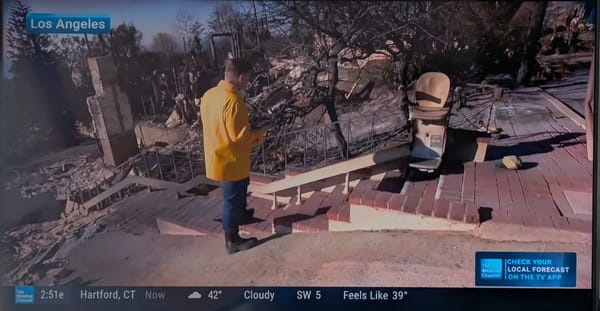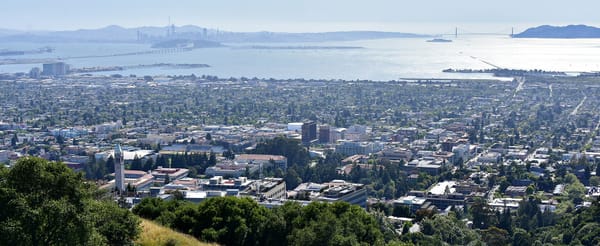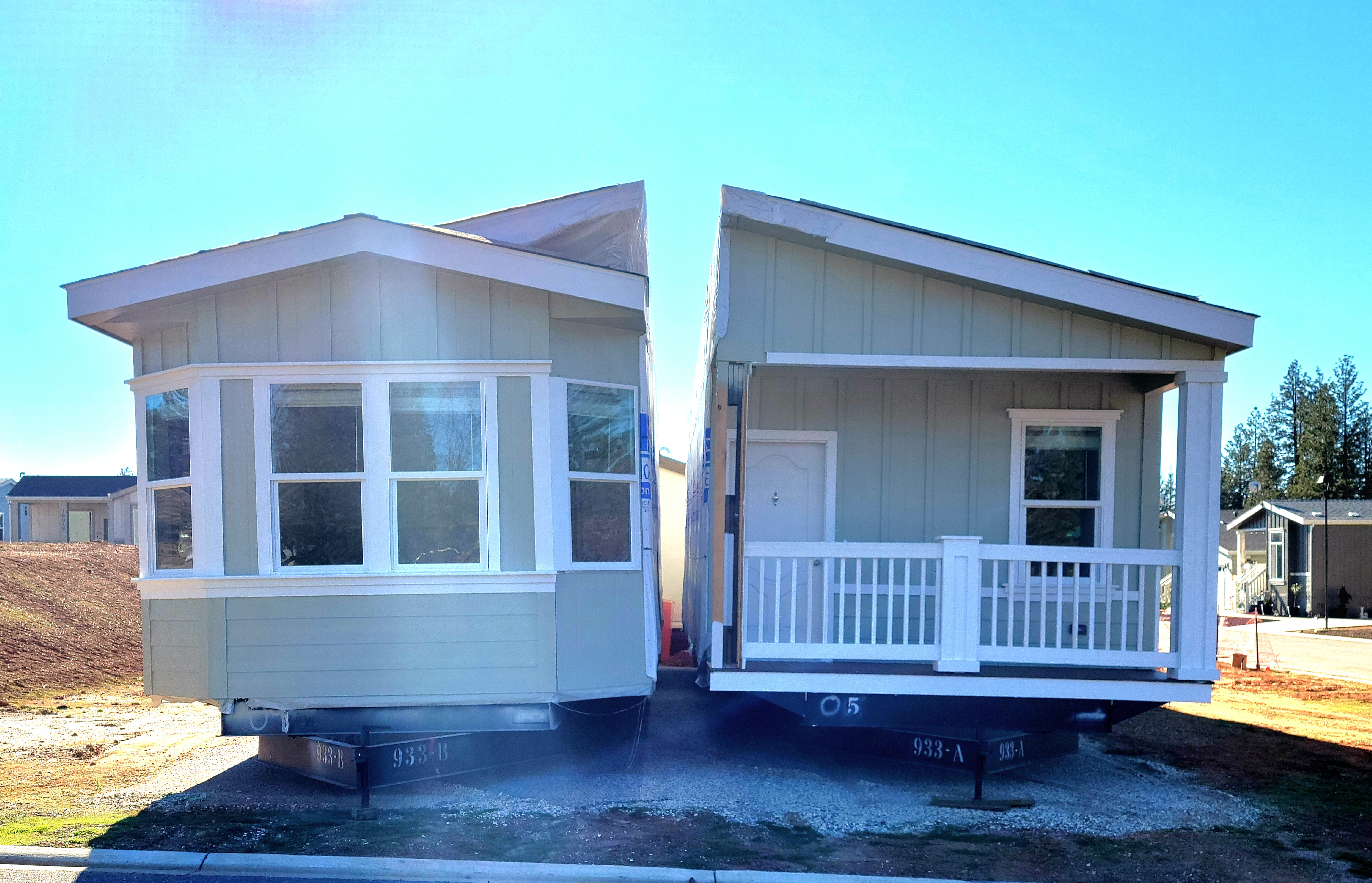Roundup 9/25: City rankings and groundbreakings
WalletHub ranks disability-friendly cities, new housing for blind & visually impaired folks breaks ground in Vegas, and more...
Happy Wednesday everyone!
This “weekly” roundup once again doesn’t line up with the end of the week, but it does line up with my life calendar: my mom was in town and left yesterday (hi Mom! Thanks for being a subscriber ❤️), and I’m heading into surgery tomorrow that’ll keep me from posting the next several days. Thus, a Wednesday post! Luckily, that surgery – a baclofen pump – should generally improve my quality of life and ability to publish this newsletter. I’ll let you know how it goes in the coming weeks.
DisabilitYIMBY is a reader-supported publication. To receive new posts and support my work, consider becoming a free or paid subscriber.
In the meantime, here are some highlights from the past week-and-change:
Best & Worst Cities for People with Disabilities (2024) – WalletHub
I’m always cautious about sharing disability-related rankings from non-disability entities, but it looks like WalletHub pulled together a pretty good methodology for comparing a full 182 cities across the US. The rankings are based on 33 criteria broken down into three main categories (Economy, Quality of Life, and Health Care). I especially like these rankings because they include housing and urbanist factors, such as:
- Housing Affordability (note: this is itself related to the relative in/balance of supply and demand)
- Cost of Living (note: these days, cost of living is impacted both directly and indirectly by housing affordability)
- Share of Homeless People with Disabilities
- Presence of Public-Housing Waiting List for Seniors/People with Disabilities
- Wheelchair-Accessible Restaurants per Capita
- Wheelchair-Accessible Grocery Stores per Capita
- Wheelchair-Accessible Art, Entertainment & Recreational Establishments per Capita
- Wheelchair-Accessible Trails per Capita
- Share of Population with Walkable Park Access (note: “walkable” environments refers to those that are easily navigable without a bike or car; the term itself may seem ableist but walkable environments are generally disability-friendly and desirable).
- Walkability
- Share of Young Buildings (note: WalletHub chose this metric because younger/newer buildings tend to have better baseline accessibility and are more easily modifiable to be accessible)
- Share of Accessible Homes Listed on Redfin.com
- Home Health Aides & Personal Care Aides per Capita (note: because these staff are generally low-wage workers, housing shortages and high cost of living can in turn generate a shortage of home health aides & personal care aides)
- Annual Cost of in-Home Services (note: this is related in no small part to the availability of home health aides & personal care aides per capita)
So, roughly 1/3 of the listed factors are related to housing and urban design, while others (like the availability of home health aides & their costs) are impacted by the housing market to some extent. You could easily argue that other factors (e.g., Occupational Therapists per Capita or Hospitals per Capita) are relevant to the central themes of this newsletter, too. It’s worth noting that each of these factors can change over time – though the development of infrastructure, economies and public services each happens in different ways and on different time frames.
Scottsdale, AZ ranked first in the country with an economy ranked 9th, quality of life 15th and healthcare 7th. It was followed by Minneapolis, MN – a city with top-five quality of life and healthcare but an economy ranked 116th. Minneapolis isn’t the only city with that kind of discrepancy, as plenty of cities with a top-10 rank in one category are well into the hundreds in others. For example, Oakland (where I live) is ranked second in quality of life, but 164th in economy and 86th in healthcare, for a cumulative rank of 40th. And the last-ranked city (Gulfport, MS) is also tied for best in the nation for its low annual cost of in-home services.
The disability experience is vastly different depending on city, state and nation, and Wallet Hub seems to have done a good job picking apart the differences (now, if only I could get my hands on that raw data…).
Affordable housing for the visually impaired breaks ground in downtown Las Vegas – 8 News Now
On Thursday, the Blind Center of Nevada broke ground on a 100-unit, $30 million housing project called Visions Park. The project benefits from $3 million in contributions from the City of Henderson and the City of North Las Vegas and is located adjacent to the near-new Blind Center campus downtown. When completed, the project will have accessibility features including “special kinds of lighting for those who are visually impaired” and “walkways and flooring that will make different kinds of noises,” according to Blind Center of Nevada President Todd Imholte.
The project is obviously beneficial in its own right: accessible housing near vital disability services provides a clear benefit to the disability community and its constituent groups, and this does so for the blind community. It’s especially valuable in a sprawling housing market like Las Vegas: the City of Sin’s metro area (let’s call it the Sinful Statistical Area) is famous for its suburban sprawl, which presents a hellish transportation environment for blind folks. On their affordable housing landing page, the Blind Center notes that many of its members spend 1-2 hours each day getting to and from the Center and spend precious funds on that commute. Las Vegas, where an estimated 58% of renters in the metro area are cost-burdened, is a cruel housing market for the blind community given “more than 70% of those who are blind and visually impaired are unemployed and rely solely on Social Security disability payments of $1,000 or less per month” (per the Blind Center site). Having designated, accessible, affordable housing for income-constrained blind and visually impaired folks, right next to the Blind Center, is a slam dunk. The fact that it’s located downtown – in an area with commerce and reasonable transit access, at least for Las Vegas – means that residents will have an easier time accessing non-Blind Center amenities than if they were to live in lower-density neighborhoods.
Kudos to all parties involved for the groundbreaking and I can’t wait to see the completed project!
Lawmakers Unveil Ambitious Federal Housing Development Bill – Affordable Housing Finance
Last week, Sen. Tina Smith (D-Minn.) and Rep. Alexandria Ocasio-Cortez (D-New York) introduced legislation to create a federal housing development authority to accelerate the construction of affordable and mixed-income housing in the US. According to Affordable Housing Finance:
The bill calls for the establishment of a housing development authority under the Department of Housing and Urban Development, which will function as a public bank and developer and work directly with state, local, and Tribal governmental agencies; mission-driven nonprofits; community land trusts; and public housing authorities to build, rehabilitate, and maintain millions of sustainable, permanently affordable homes.
The development authority would receive “$30 billion in annual appropriations for fiscal years 2025 through 2035,” which AOC states would fund over 1 million new housing units including more than 850,000 for low- and extremely low-income families. In addition to the annual appropriations, the development authority would also have a revolving loan fund “to recoup and reinvest funds back into housing.” Affordable Housing Finance lists eight additional points for the bill, ranging from affordability requirements to construction labor requirements to tenant protections and homeownership opportunities.
In a housing market where people with disabilities are disproportionately low income, disproportionately renters, and disproportionately homeless, additional government efforts to expand the housing supply (and affordable housing specifically) will disproportionately benefit the disability community. We certainly need more at the federal level, both for its own sake and to make up for state-level shortcomings. Fingers crossed this makes it through Congress and gets signed…
Bay Area food bank move could be blocked by lawsuit citing ‘historic parking lot’ – San Francisco Chronicle
In Alameda, CA, the local food bank is expanding its operations to better serve the community, including many clients with disabilities. They recently purchased a 5000-square-foot building and planned to expand it with a 10,000-square-foot warehouse for both refrigerated and non-refrigerated food. It’s an incredibly important project for the community and will disproportionately benefit people with disabilities in Alameda.
However, that project may need to be scrapped because of petty grievances from litigious NIMBY neighbors who are suing the city, claiming that expansion of the food bank was done without appropriate environmental review. The neighbors, Tod Hickman and Shelby Sheehan, have unrelated disputes with the city and are suing under the California Environmental Quality Act (CEQA), which has historically been a NIMBY cudgel to block projects that are environmentally benign or beneficial, but which can be sued under CEQA regardless. Now, Hickman and Sheehan are suing the city over the food bank and an adjacent clean energy manufacturing project, largely because those two litigants have their own unrelated grievances with Alameda and are essentially throwing tantrums – with hungry families and the environment as collateral damage.
There are countless examples of CEQA abuse across California each year, and this one is especially egregious. The suit refers to a “historic parking lot” and calls the prefabricated building “historically-offensive.” There are no valid environmental arguments against the project, but the lawsuit may harm the Food Bank’s plans regardless. It’s a shameful situation and yet another example of why we need permitting reform.
That’s it for the main headlines of the past week-and-change. Here are a few other articles related to disability, housing, or both:
Gov. Newsom signs package to boost home building, expand affordable housing – ABC 7 News
Latino groups denounce laws making it harder to help voters with disabilities and language issues – NBC News
Hundreds left without disability services in MO despite DOJ warning – Fox 2 NOW
EESC calls for better inclusion of persons with disabilities in the labour market – European Economic and Social Committee
'They need treatment': For Oregonians with disabilities, mental health care can be tough to access – KGW 8
Disabled Union Members Are Strengthening the Labor Movement – The Nation
30,000 People Died Waiting on Disability Decisions in 2023, SSA Estimates – Think Advisor
Parents with disabilities have faced discrimination for years in the US, but new rules will help ensure that child welfare systems treat them more fairly – The Conversation
How California NIMBYs are weaponizing historic preservation to stop new homes – San Francisco Chronicle
Modular homes are helping solve Cleveland's housing shortage – Axios Cleveland
DC mayor announces $12M federal investment in housing loan fund – DC News Now
Built-to-rent communities a growing U.S. trend amid sky-high housing costs – CBS News
In a major shift, the U.S. government explores giving renters cash, not vouchers – NPR
'unseen' explores the intersections of immigration, disability and mental health – WUWM 89.7
Hungry for affordable housing, communities turn to land trusts – Route Fifty
Glendale got the Pentagon to help kill an affordable housing bill earlier this year – AZ Mirror




